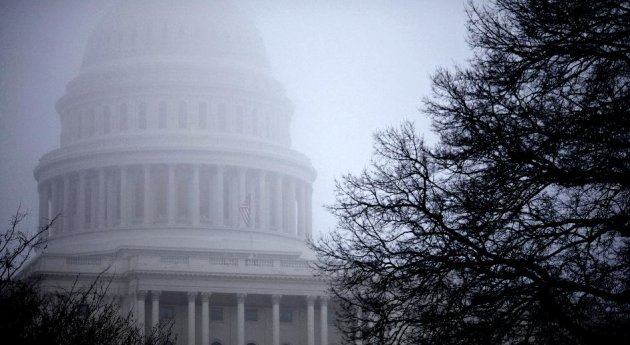 Millions of families and businesses will get hit by big tax increases a lot sooner than many realize if Congress
and the White House don't agree on a plan to skirt the year-end fiscal
cliff of higher tax rates and big government spending cuts.
Millions of families and businesses will get hit by big tax increases a lot sooner than many realize if Congress
and the White House don't agree on a plan to skirt the year-end fiscal
cliff of higher tax rates and big government spending cuts.
In fact, they already have.
More than 70 tax breaks enjoyed
by individuals and businesses expired at the end of 2011. If Congress
doesn't extend them retroactively back to the beginning of this year, a
typical middle-class family could face a $4,000 tax increase when it files its 2012 return in the spring, according to an analysis by H&R Block, the tax preparing giant.
At the same time, businesses could lose dozens of tax breaks
they have enjoyed for years, including generous credits for investing
in research and development, write-offs for restaurants and retail
stores that expand or upgrade, and tax breaks for financial companies
with overseas subsidiaries.
Even if Congress does act, last-minute changes to federal tax laws
could make it difficult for taxpayers to figure out their 2012 tax
bills.
"We're really expecting this upcoming tax season to be one of the
more challenging ones on record," said Kathy Pickering, executive
director of The Tax Institute at H&R Block. "For your 2012 returns
there's so much confusion about what will be impacted."
Much of Washington is consumed by
negotiations over how to address automatic tax increases scheduled to
take effect next year. That's when tax cuts first enacted under the shrub, and extended under President Barack Obama, are
scheduled to expire. A temporary reduction in the Social Security payroll tax is set to vanish as well.
Obama wants to let the shrub-era tax cuts
expire on incomes above $200,000 for individuals and $250,000 for
married couples, while extending the tax cuts for people making less.
House Speaker John Boehner
and other repugicans have said they are open to more tax revenue
through reducing or eliminating unspecified tax breaks. But Boehner, r-Ohio, late last week moved toward the president's position, proposing
raising top rates for people earning more than $1 million in exchange
for deeper spending cuts, particularly in health care and other
mandatory spending programs.
Obama has not accepted that offer, according to people familiar with
the talks, but Boehner's offer suggests that the negotiations are being
renewed after appearing stalled just days ago.
Lost in the debate is a big package of tax breaks that already
expired for 2012. Lawmakers in both parties say they expect those tax
cuts to be addressed in any deal to avoid the "fiscal cliff." But they
don't want to deal with them separately because that would reduce
pressure to reach a broader budget agreement.
The biggest tax increase facing
individuals for this year is the alternative minimum tax, or AMT. The
tax was first enacted in 1969 to ensure that wealthy people can't use
tax breaks to avoid paying any federal taxes. The AMT, however, was
never adjusted for inflation, so Congress routinely does that to keep it
from imposing hefty tax increases on millions of middle-income families.
Congress last adjusted the AMT in 2010, and about 4 million taxpayers
paid it 2011. Without a new adjustment for the 2012 tax year, the AMT
would reach an additional 28 million taxpayers, increasing their tax
bill by an average of $3,700.
The tax would affect individuals making more $33,750 and married
couples making more than $45,000, according to the Internal Revenue
Service.
Other expired tax breaks include
deductions for college expenses, deductions for state and local sales
taxes, and a $250 deduction for teachers who buy classroom supplies with
their own money. The sales tax deduction is geared toward taxpayers in
states without state income taxes: Alaska, Florida, Nevada, New
Hampshire, South Dakota, Tennessee, Texas, Washington and Wyoming.
The tax increases could vary greatly, depending on how much money a
person makes and which deductions they qualify for. For example, a
single man making $65,000 who paid $6,000 in college tuition and fees
would get a tax increase of $837, mainly because he would lose a
deduction for college expenses, according to the H&R Block analysis.
A married couple with two young
children and a $100,000 income could face a tax increase of more than
$6,600, if they live in a state that doesn't have a state income tax.
Most of that increase — about $4,015 — would come from the AMT. The AMT
would also reduce their tax credits and they would lose a deduction for paying state and local sales taxes.
The AMT is expensive to fix. A
two-year adjustment passed by the Senate Finance Committee last summer
would save middle-income taxpayers a total of $132 billion in 2012 and
2013, according to the Joint Committee on Taxation, the official
scorekeeper for Congress. The bill addressed many of the tax breaks that
expired for 2012, and the committee passed it with bipartisan support.
But the full Senate never considered it.
The AMT adjustment also includes a
rule that affects the way tax credits are calculated for millions of
taxpayers, even if they don't have to pay the AMT, the IRS said. These
taxpayers may not necessarily face a tax increase, but there could be
delays in processing their returns.
Congress has always adjusted the
AMT in the past, and the IRS is preparing as if lawmakers will do so
again, acting IRS Commissioner Steven T. Miller said in a recent letter
to members of Congress.
If lawmakers don't address the AMT, about 60 million taxpayers, nearly
half of all individual filers, would have to wait until late March — if
not later — to file their returns while the IRS reworks its systems,
Miller said.
"Essentially, IRS has said it
will be chaos — chaos! — trying to make it work," said Rep. Sander Levin
of Michigan, the ranking Democrat on the tax-writing House Ways and
Means Committee.






















